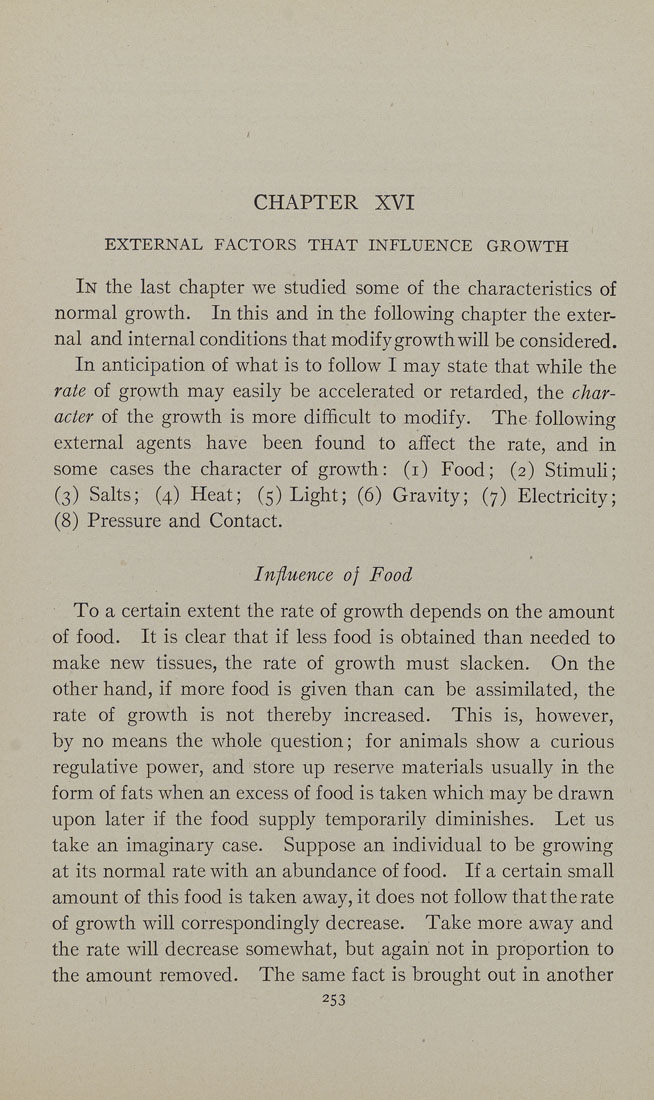CHAPTER XVI
EXTERNAL FACTORS THAT INFLUENCE GROWTH
In the last chapter we studied some of the characteristics of
normal growth. In this and in the following chapter the exter¬
nal and internal conditions that modify growth wiU be considered.
In anticipation of what is to follow I may state that while the
rate of growth may easily be accelerated or retarded, the char¬
acter of the growth is more difficult to modify. The following
external agents have been found to affect the rate, and in
some cases the character of growth: (i) Food; (2) Stimuli;
(3) Sahs; (4) Heat; (5) Light; (6) Gravity; (7) Electricity;
(8) Pressure and Contact.
Influence of Food
To a certain extent the rate of growth depends on the amount
of food. It is clear that if less food is obtained than needed to
make new tissues, the rate of growth must slacken. On the
other hand, if more food is given than can be assimilated, the
rate of growth is not thereby increased. This is, however,
by no means the whole question; for animals show a curious
regulative power, and store up reserve materials usually in the
form of fats when an excess of food is taken which may be drawn
upon later if the food supply temporarily diminishes. Let us
take an imaginary case. Suppose an individual to be growing
at its normal rate with an abundance of food. If a certain small
amount of this food is taken away, it does not follow that the rate
of growth will correspondingly decrease. Take more away and
the rate will decrease somewhat, but again not in proportion to
the amount removed. The same fact is brought out in another
253
|








